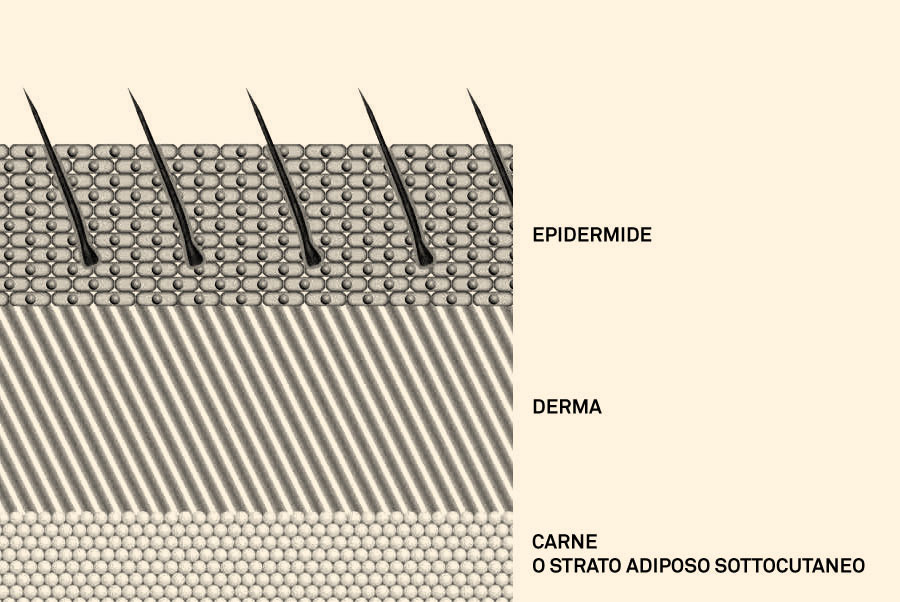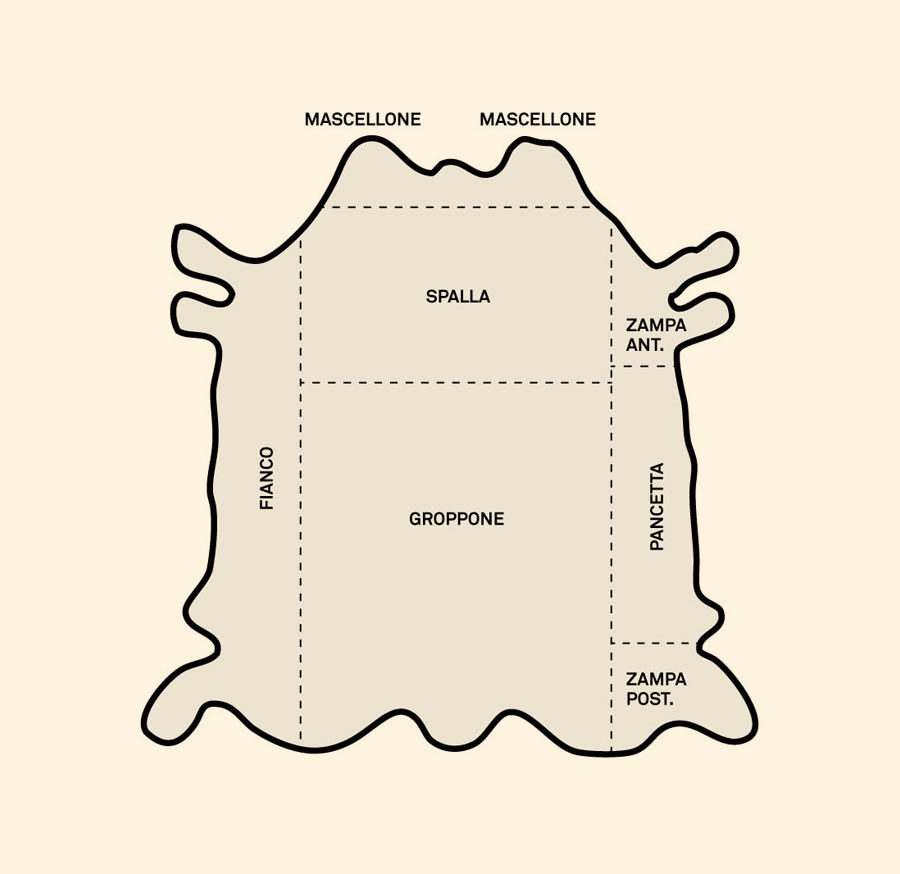Knowing hide
The hide is essentially made up of three layers: epidermis, derma and “flesh” or adipose subcutaneous layer.
EPIDERMIS
The epidermis, mainly composed of keratin, it represents 1% of the total thickness and it is taken away during the first stages of the process, together with hair, hair follicles and horny material.
DERMA
The derma, consisting of connecting tissue, rich in collagen and proteins, it represents 85% of the thickness. It is made up of connecting fibres that form a close net in the upper side (called papillary layer) and a looser net in the lower side (called reticular layer). In the tanning world it is very important to make a clear distinction between papillary layer, which forms the hide grain, and the reticular layer also called split.
FLESH OR ADIPOSE SUBCUTANEOUS LAYER
The “flesh” or “adipose subcutaneous layer” represents 14% of the thickness and is made up mainly of elastic fibres and fat substances, it’s the side which sticks to the animal body and it is removed before tanning the hide.
CLASSIFICATION OF THE RAW HIDE
Every kind of hide can be tanned but, among all species, the most used raw hides are of bovine origin. There are plenty of bovine breeds which are different according to their origin area and to their final use (for the production of meat, dairy products or for work). They can be divided according to their age and weight as follows:
• Calf hides (12/20 kg, 20/26 kg)
• Bovine hides (<30 kg, 30/40 kg)
• Bull hides (< 40 kg, 40/50 kg)
Calf hides are used mainly to manufacture shoe uppers, bags and leather goods.
Cow and bull hides are most suitable for upholstery items, such as sofas, chairs and benches as also for car interiors.
PART OF THE HIDE
Real leather is a natural product, therefore its tightness, resistance and elasticity are different according to the animal body part the hide adhered.
For instance the croupon or double butt is the most resistant part and it is perfect for cushions and big parts.
The shoulder is equally valid but you have to take into account the natural wrinkles of the neck that are not to be considered defects – as it wrongly happens – but a sign of real leather.
The sides and the legs are the most elastic parts, they have lower mechanical resistance and the grain is not uniform, therefore it’s better they are used to produce parts not subject to stress and not visible.
All these features are very important when you cut and work the leather to realize different kinds of articles.
LEATHER SIGNS AND IMPERFECTIONS
The main imperfections you can find on the leather are the following ones:
• Signs of the animal alive: scratches out of barbed wire/hedges/scrubs, goad pricks, brands (on the exotic hides), scars, damaged grain out of dung and urine and holes due to insects such as mites, tarola and ticks.
• Slaughtering defects: knife cuts and holes
• Preservation defects: salt spots, mildew stains, spots due to bacteria and decomposition.


